The Book of Enoch
Genesis 5:18-24 [18] Jared lived one hundred and sixty-two years, and begot Enoch. [19] After he begot Enoch, Jared lived eight hundred years, and had sons and daughters. [20] So all the days of Jared were nine hundred and sixty-two years; and he died. [21] Enoch lived sixty-five years, and begot Methuselah. [22] After he begot Methuselah, Enoch walked with God three hundred years, and had sons and daughters. [23] So all the days of Enoch were three hundred and sixty-five years. [24] And Enoch walked with God; and he was not, for God took him.
Hebrews 11:5 By faith Enoch was taken away so that he did not see death, "and was not found, because God had taken him"; for before he was taken he had this testimony, that he pleased God.
Jude 1:14-15 [14] Now Enoch, the seventh from Adam, prophesied about these men also, saying, "Behold, the Lord comes with ten thousands of His saints, [15] to execute judgment on all, to convict all who are ungodly among them of all their ungodly deeds which they have committed in an ungodly way, and of all the harsh things which ungodly sinners have spoken against Him."
We first learn of Enoch in Genesis 5 but it leaves us with questions. Hebrews 11 has the answers and Jude quotes Enoch! How did Jude come to know the words of Enoch? They are not in the Bible. The answer of course, is The Book of Enoch. A book which is actually quoted by Jude in the New Testament. What is the Book of Enoch and where did it come from?
Enoch was the great-grandfather of Noah. The Book of Enoch chapter 68:1 "And after that my great-grandfather Enoch gave me all the secrets in the book and in the parables which had been given to him, and he put them together for me in the words of the book of the parables."
The Book of Enoch was extant centuries before the birth of Christ and yet is considered by many to be more Christian in its theology than Jewish. It was considered scripture by many early Christians. The earliest literature of the so-called "Church Fathers" is filled with references to this mysterious book. The early second century "Epistle of Barnabus" makes much use of the Book of Enoch. Second and Third Century "Church Fathers" like Justin Martyr, Irenaeus, Origin and Clement of Alexandria all make use of the Book of Enoch. Tertullian (160-230 C.E) even called the Book of Enoch "Holy Scripture". The Ethiopic Church even added the Book of Enoch to its official canon. It was widely known and read the first three centuries after Christ. This and many other books became discredited after the Council of Laodicea. And being under ban of the authorities, afterwards it gradually passed out of circulation.
At about the time of the Protestant Reformation, there came to be a renewed interest in the Book of Enoch which had long since been lost to the modern world. By the late 1400's rumors began to spread that somewhere a copy of the long lost Book of Enoch might still exist. During this time many books arose claiming to be the long lost book and were later found to be forgeries.
The return of the long lost Book of Enoch to the modern western world is credited to the famous explorer James Bruce, who in 1773 returned from six years in Abyssinia with three Ethiopic copies of the lost book. In 1821 Richard Laurence published the first English translation. The famous R.H. Charles edition was published in 1912. In the following years several portions of the Greek text surfaced. Then with the discovery of cave 4 of the Dead Sea Scrolls, seven fragmentary copies of the Aramaic text were discovered.
There are scholars who believe the Book of Enoch was published before the Christian era by some great unknown of Semetic race, who believing himself to be inspired in a post-prophetic age, borrowed the name of an antediluvian patriarch to authenticate his own enthusiastic forcast of the coming Messiah. The Book of Enoch is divided into five basic parts, but it is the The Book of Parables (37-71) which gives scholars the most trouble for it is primarily concerned with a figure called "the messiah"; "the righteous one"; "the chosen one" and "the son of man."
The Book of Enoch Chapter 46:1-2 [1] There I beheld the Ancient of days whose head was like white wool, and with him another, whose countenance resembled that of a man. His countenance was full of grace, like that of one of the holy angels. Then I inquired of one of the angels, who went with me, and who showed me every secret thing, concerning this Son of man; who he was; whence he was; and why he accompanied the Ancient of days. [2] He answered and said to me, This is the Son of man, to whom righteousness belongs; with whom righteousness has dwealt; and who will reveal all the treasures of that which is concealed: for the Lord of spirits has chosen him; and his portion has surpassed all before the Lord of spirits in everlasting uprightness."
(1) 1 Enoch
Discovery of the "Lost Text"
"The Greek word pseudepigrapha is a Greek word meaning 'falsely superscribed,' or what we moderns might call writing under a pen name. The classification, 'OT Pseudepigrapha,' is a label that scholars have given to these writings."
- Craig A. Evans, Noncanonical Writings and New Testament Interpretation, (1992) p. 22
"The Book of Enoch is a pseudepigraphical work (a work that claims to be by a biblical character). The Book of Enoch was not included in either the Hebrew or most Christian biblical canons, but could have been considered a sacred text by the sectarians."
- Milik, Jazef. T., ed. The Books of Enoch: Aramaic Fragments of Qumran Cave 4
The Book of Enoch is "an ancient composition known from two sets of versions, an Ethiopic one that scholars identify as '1 Enoch', and a Slavonic version that is identified as '2 Enoch', and which is also known as The Book of the Secrets of Enoch. Both versions, of which copied manuscripts have been found mostly in Greek and Latin translations, are based on early sources that enlarged on the short biblical mention that Enoch, the seventh Patriarch after Adam, did not die because, at age 365, 'he walked with God' - taken heavenward to join the deity."
- Zecharia Sitchin, When Time Began
"I Enoch, also known as the Ethiopic Apocalypse of Enoch, is the oldest of the three pseudepigraphal books attributed to Enoch, the man who apparently did not die, but was taken up to heaven (Gen 5:24). The book was originally written in either Hebrew or Aramaic, perhaps both, but it survives in complete form only in Ethiopic (Ge'ez), and in fragmentary form in Aramaic, Greek (1:1-32:6; 6:1-10:14; 15:8-16:1; 89:42-49; 97:6-104), and Latin (106:1-18)."
"The materials in I Enoch range in date from 200 B.C.E. to 50 C.E. I Enoch contributes much to intertestamental views of angels, heaven, judgment, resurrection, and the Messiah. This book has left its stamp upon many of the NT writers, especially the author of Revelation."
- Craig A. Evans, Noncanonical Writings and New Testament Interpretation, (1992) p. 23
"Prior to the eighteenth century, scholars had believed the Book of Enoch to be irretrievably lost: composed long before the birth of Christ, and considered to be one of the most important pieces of Jewish mystical literature, it was only known from fragments and from references to it in other texts. James Bruce changed all this by procuring several copies of the missing work during his stay in Ethiopia. These were the first complete editions of the Book of Enoch ever to be seen in Europe."
- Graham Hancock, The Sign and the Seal
"The Book of Enoch remained in darkness until 1821, when the long years of dedicated work by a professor of Hebrew at the University of Oxford were finally rewarded with the publication of the first ever English translation of the Book of Enoch. The Reverend Richard Laurence, Archbishop of Cashel, had labored for many hundreds of hours over the faded manuscript in the hands of the Bodleian Library, carefully substituting English words and expressions for the original Geez, while comparing the results with known extracts, such as the few brief chapters preserved in Greek by Syncellus during the ninth century."
- Andrew Collins, From the Ashes of Angels - The Forbidden Legacy of a Fallen Race (1996) p. 21
"The original Aramaic version was lost until the Dead Sea fragments were discovered."
"The original language of most of this work was, in all likelihood, Aramaic (an early Semitic language). Although the original version was lost in antiquity, portions of a Greek translation were discovered in Egypt and quotations were known from the Church Fathers. The discovery of the texts from Qumran Cave 4 has finally provided parts of the Aramaic original. ...Humankind is called on to observe how unchanging nature follows God's will."
- Milik, Jazef. T., ed. The Books of Enoch: Aramaic Fragments of Qumran Cave 4
Composition
"1 Enoch, preserved in a full, 108-chapter form in Ethiopic, consists of five parts and one appended chapter. It originated in Aramaic (perhaps Hebrew for chaps. 37-71), was translated into Greek, and from Greek into Ethiopic."
- James C. Vanderkam (Professor of Hebrew Scriptures at the University of Notre Dame)
"The Aramaic Book of Enoch...very considerably influenced the idiom of the New Testament and patristic literature, more so in fact than any other writing of the Apocrypha and Pseudepigrapha."
- Norman Golb, Who Wrote the Dead Sea Scrolls?, (1995) p. 366
"As it now stands, I Enoch appears to consist of the following five major divisions:
(1) The Book of the Watchers (chaps. 1-36);
(2) The Book of the Similitudes (chaps. 37-7l)-,
(3) The Book of Astronomical Writings (chaps. 72-82);
(4) The Book of Dream Visions (chaps. 83-90); and
(5) The Book of the Epistle of Enoch (chaps. 91-107)."
- Craig A. Evans, Noncanonical Writings and New Testament Interpretation, (1992) p. 23
"Chaps. 1-36 The Book of the Watchers may date from the third century BCE. Parts of its text have been identified on several copies from Qumran cave 4; the earliest fragmentary manuscript (4QEnocha) dates, according to the editor J.T. Milk, to between 200 and 150 BCE. All Qumran copies are in the Aramaic language."
- James C. Vanderkam
"James Vanderkam divides the first part of 1 Enoch into five sections:
1-5 a theophany followed by an eschatological admonition
6-11 the angel story (stories)
12-16 Enoch and the failed petition of the angels who descended,
17-19 Enoch's first journey,
20-36 Enoch's second journey (chap. 20 is a list of angels who are connected with the journeys)."
- Tom Simms (CrossTalk)
"Chaps. 37-71 The Book of Parables (or the Similitudes of Enoch) may have been composed in the late first century BCE; a number of scholars prefer to place it in the first or even the second century CE. Milik assigns it to the late third century CE. No fragments of these chapters have been found at Qumran, and some think their original language was Hebrew, not Aramaic."
- James C. Vanderkam
"Chaps. 72-82 The Astronomical Book, like the Book of Watchers, may date from the third century BCE; the oldest copy of it seems to have been made not long after 200 BCE. Sizable portions of the text are preserved on four copies, written in Aramaic, from Qumran cave 4. The Aramaic original appears to have been much different and much longer than the Ethiopic text, adding far more astronomical details."
- James C. Vanderkam
Authorship
"A world view so encyclopaediac that it embraced the geography of heaven and earth, astronomy, meteorology, medicine was no part of Jewish tradition - but was familiar to educated Greeks, but attempting to emulate and surpass Greek wisdom, by having an integrating divine plan for destiny, elaborated through an angelic host with which Enoch is in communication through his mystical travels."
- Chris King, "The Apocalyptic Tradition"
Although the Book of Enoch is considered as apocryphal, it was clearly known to early Christian writers as the following quote from 1 Enoch 1:9 indicates:
"In the seventh (generation) from Adam Enoch also prophesied these things, saying: 'Behold, the Lord came with his holy myriads, to execute judgment on all, and to convict all the ungodly of all their ungodly deeds which they have committed in such an ungodly way, and of all the harsh things which ungodly sinners spoke against him'."2 Enoch
- Jude 14-15
"2 Enoch, or the Slavonic Apocalypse of Enoch, was written late first century C.E. in Egypt by a Jew. It survives only in late Old Slavonic manuscripts. It may have been composed originally in Aramaic or Hebrew, later being translated into Greek, and later still being translated into Old Slavonic. It is an amplification of Gen 5:21-32 (from Enoch to the Flood). Major theological themes include:
(1) God created the world out of nothing (24:2);
(2) seven heavens (30:2-3) and angelic hosts;
(3) God created the souls of men before the foundation of the earth (23:5);
(4) abodes of heaven and hell are already prepared for righteous and sinners; and
(5) ethical teachings, which at times parallel those of the NT and Proverbs."
- Craig A. Evans, Noncanonical Writings and New Testament Interpretation, (1992) p. 23
Date: 07/22/2000 Author: David Chariot "beth_marcaboth@hotmail.com" posted in alt.religion.christian.pentecostal-BEGIN
About the Book of Enoch
(also known as "Ethiopian Enoch" or "1 Enoch")
The Book of Enoch (also known as 1 Enoch) was once cherished by Jews and Christians alike, this book later fell into disfavor with powerful theologians - precisely because of its controversial statements on the nature and deeds of the fallen angels.
The Enochian writings, in addition to many other writings that were excluded (or lost) from the Bible (i.e., the Book of Tobit, Esdras, etc.) were widely recognized by many of the early church fathers as "apocryphal" writings. The term "apocrypha" is derived from the Greek word meaning "hidden" or "secret". Originally, the import of the term may have been complimentary in that the term was applied to sacred books whose contents were too exalted to be made available to the general public.
In Dan. 12:9-10 we hear of words that are shut up until the end of time and, words that the wise shall understand and the wicked shall not. In addition, 4 Ezra 14:44ff. mentions 94 books, of which 24 (the OT) were to be published and 70 were to be delivered only to the wise among the people (= apocrypha). Gradually, the term "apocrypha" took on a pejorative connotation, for the orthodoxy of these hidden books was often questionable. Origen (Comm. in Matt. 10.18; p. 13.881)
distinguished between books that were to be read in public worship and apocryphal books. Because these secret books were often preserved for use within the esoteric circles of the divinely - knit believers, many of the critically - spirited or "unenlightened" Church Fathers found themselves outside the realm of understanding, and therefore came to apply the term "apocryphal" to, what they claimed to be, heretical works which were forbidden to be read.
In Protestant parlance, "the Apocrypha" designate 15 works, all but one of which are Jewish in origin and found in the Septuagint (parts of 2 Esdras are Christian and Latin in origin). Although some of them were composed in Palestine in Aramaic or Hebrew, they were not accepted into the Jewish canon formed late in the 2nd cent. AD (Canonicity, 67:31-35). The Reformers, influenced by the Jewish canon of the OT, did not consider these books on a par with the rest of the Scriptures; thus the custom arose of making the Apocrypha a separate section in the
Protestant Bible, or sometimes even of omitting them entirely
(Canonicity, 67:44-46). The Catholic view, expressed as a doctrine of faith at the Council of Trent, is that 12 of these 15 works (in a different enumeration, however) are canonical Scripture; they are called the Deuterocanonical Books (Canonicity, 67:21, 42-43).
The three books of the Protestant Apocrypha that are not accepted by Catholics are 1-2 Esdras and the Prayer of Manasseh. The theme of the Book of Enoch dealing with the nature and deeds of the fallen angels so infuriated the later Church fathers that one, Filastrius, actually condemned it openly as heresy (Filastrius, Liber de Haeresibus, no. 108). Nor did the rabbis deign to give credence to the book's teaching about angels. Rabbi Simeon ben Jochai in the second century A.D. pronounced a curse upon those who believed it (Delitzsch, p. 223). So the book was denounced, banned, cursed, no doubt burned and
shredded - and last but not least, lost (and conveniently forgotten) for a thousand years. But with an uncanny persistence, the Book of Enoch found its way back into circulation two centuries ago.
In 1773, rumors of a surviving copy of the book drew Scottish explorer James Bruce to distant Ethiopia. True to hearsay, the Book of Enoch had been preserved by the Ethiopic church, which put it right alongside the other books of the Bible. Bruce secured not one, but three Ethiopic copies of the book and brought them back to Europe and Britain. When in 1821 Dr. Richard Laurence, a Hebrew professor at Oxford, produced the first English translation of the work, the modern world gained its first glimpse of the forbidden mysteries of Enoch.
Most scholars say that the present form of the story in the Book of Enoch was penned sometime during the second century B.C. and was popular for at least five hundred years. The earliest Ethiopic text was apparently made from a Greek manuscript of the Book of Enoch, which itself was a copy of an earlier text. The original was apparently written in Semitic language, now thought to be Aramaic.
Though it was once believed to be post-Christian (the similarities to Christian terminology and teaching are striking), recent discoveries of copies of the book among the Dead Sea Scrolls found at Qumran prove that the book was in existence before the time of Jesus Christ. But the date of the original writing upon which the second century B.C. Qumran copies were based is shrouded in obscurity. It is, in a word, old. It has been largely the opinion of historians that the book does not really contain the authentic words of the ancient biblical patriarch Enoch, since he would have lived (based on the chronologies in the Book of Genesis) several thousand years earlier than the first known appearance of the book attributed to him.
Despite its unknown origins, Christians once accepted the words of this Book of Enoch as authentic scripture, especially the part about the fallen angels and their prophesied judgment. In fact, many of the key concepts used by Jesus Christ himself seem directly connected to terms and ideas in the Book of Enoch. Thus, it is hard to avoid the conclusion that Jesus had not only studied the book, but also respected it highly enough to adopt and elaborate on its specific descriptions of the coming kingdom and its theme of inevitable judgment descending upon "the wicked" - the term most often used in the Old Testament to describe the Watchers.
There is abundant proof that Christ approved of the Book of Enoch. Over a hundred phrases in the New Testament find precedents in the Book of Enoch. Another remarkable bit of evidence for the early Christians' acceptance of the Book of Enoch was for many years buried under the King James Bible's mistranslation of Luke 9:35, describing the
transfiguration of Christ: "And there came a voice out of the cloud, saying, 'This is my beloved Son: hear him." Apparently the translator here wished to make this verse agree with a similar verse in Matthew and Mark. But Luke's verse in the original Greek reads: "This is my Son, the Elect One (from the Greek ho eklelegmenos, lit., "the elect one"): hear him." The "Elect One" is a most significant term (found fourteen times) in the Book of Enoch. If the book was indeed known to the apostles of Christ, with its abundant descriptions of the Elect One who should "sit upon the throne of glory" and the Elect One who should "dwell in the midst of them," then the great scriptural authenticity is accorded to the Book of Enoch when the "voice out of the cloud" tells the apostles, "This is my Son, the Elect One" - the one promised in the Book of Enoch.
The Book of Jude tells us in vs. 14 that "Enoch, the seventh from Adam, prophesied..." Jude also, in vs. 15, makes a direct reference to the Book of Enoch (2:1), where he writes, "to execute judgment on all, to convict all who are ungodly..." The time difference between Enoch and Jude is approximately 3400 years. Therefore, Jude's reference to the Enochian prophesies strongly leans toward the conclusion that these written prophesies were available to him at that time.
Fragments of ten Enoch manuscripts were found among the Dead Sea Scrolls. The famous scrolls actually comprise only one part of the total findings at Qumran. Much of the rest was Enochian literature, copies of the Book of Enoch, and other apocryphal works in the Enochian tradition, like the Book of Jubilees. With so many copies around, the Essenes could well have used the Enochian writings as a community prayer book or teacher's manual and study text.
The Book of Enoch was also used by writers of the noncanonical (i.e. apocryphal or "hidden") texts. The author of the apocryphal Epistle of Barnabas quotes the Book of Enoch three times, twice calling it "the Scripture," a term specifically denoting the inspired Word of God (Epis. of Barnabas 4:3, 16:5,6). Other apocryphal works reflect knowledge of the Enoch story of the Watchers, notably the Testaments of the Twelve Patriarchs and the Book of Jubilees.
Many of the early church fathers also supported the Enochian writings. Justin Martyr ascribed all evil to demons whom he alleged to be the offspring of the angels who fell through lust for women (from the Ibid.)-directly referencing the Enochian writings. Athenagoras, writing in his work called Legatio in about 170 A.D., regards Enoch as a true prophet. He describes the angels which "violated both their own nature and their office." In his writings, he goes into detail about the nature of fallen angels and the cause of their fall, which comes directly from the Enochian writings.
Many other church fathers: Tatian (110-172); Irenaeus, Bishop of Lyons (115-185); Clement of Alexandria (150-220); Tertullian (160-230); Origen (186-255); Lactantius (260-330); in addition to: Methodius of Philippi, Minucius Felix, Commodianus, and Ambrose of Milanalso-also approved of and supported the Enochian writings.
The twentieth-century discovery of several Aramaic Enochian texts among the Dead Sea Scrolls prompted Catholic scholar J.T. Milik to compile a complete history of the Enochian writings, including translations of the Aramaic manuscripts. Milik's 400-page book, published in 1976 by Oxford (J. T. Milik, ed. and trans., The Books of Enoch: Aramaic Fragments of Qumran Cave 4, Oxford: Clarendon Press, 1976) is a milestone in Enochian scholarship, and Milik himself is no doubt one of the finest experts on the subject. His opinions, based as they are on years of in-depth research, are highly respected.
One by one the arguments against the Book of Enoch fade away. The day may soon arrive when the final complaints about the Book of Enoch's lack of historicity and "late date" are also silenced by new evidence of the book's real antiquity.
- END
Book of Enoch
CharlesEthiopian Enoch
1 - 60
Laurence
Ethiopian Enoch
61 - 105
Laurence
Secrets of Enoch
1 - 68
Laurence
Links
Apocryphical Book of Enoch The Book of Enoch (Idris) the First Prophet The Book of Enoch Quoted in New Testament What About The Book of Enoch? Why You Should Read The Book of Enoch? The Enoch Page The Book of Enoch About The Book of Enoch Calendar of Enoch
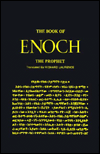
by LaurenceBook of Enoch:
& Greek Fragments
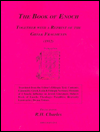
by R.H. Charles
The Book of the Secrets of Enoch
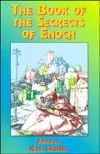
by R.H. Charles
Book of Enoch
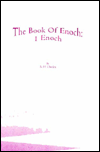
by R.H. Charles
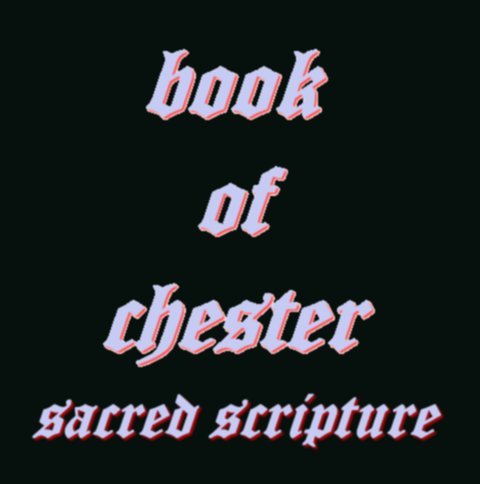
No comments:
Post a Comment